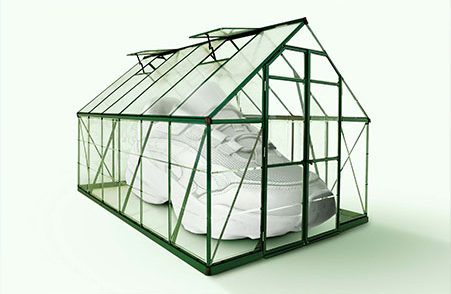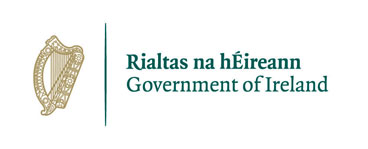- Lifestyle & Sports
- 24 Sep 20
Fast Fashion: We'll Have To Start Thinking Differently About Clothes

The very modern phenomenon of ‘fast fashion’ has led to mountains of waste textiles being produced every year – in Ireland alone. Across the world, it is a major obstacle to sustainability. The Government’s Waste Action Plan for a Circular Economy aims to tackle this issue. In ten questions, we explain why it is time to make a real change to the way we look at fashion...
What is fast fashion?
It is vital to recognise the difference between cheap clothes and fast fashion. The latter, as the phrase ‘fast fashion’ suggests, is specifically about accelerating retail and trend cycles, so that producers can produce more, retailers can sell more and people buy more.
And why does fast fashion represent such a serious problem?
Fast fashion is about maximising turnover within the fashion industry, and viewing clothing as disposable. Irrespective of whether clothing is low, medium or high cost, the push is for people to buy it, use it and dump it. The objective here is to drive round-the-clock consumer demand and to stay on-trend. Fast fashion is not about discounted clothing for families under pressure.
I thought a lot of clothes were recycled...
I’m glad you brought that up. Here’s an extraordinary statistic: globally, only 1% of our textiles are recycled. And here’s another: in Ireland alone, we are sending 63,000 tonnes of textiles to landfill every year. The once-off use of resources on this scale amounts to criminal waste. It is like pouring money down the drain.

But are clothes not cheap to make nowadays?
Not really. For a start, there is a hidden cost: vast resources are used in the manufacture of the textiles to make clothes – in terms of water, materials, transportation, land use and so on. In addition, poorly-designed clothing can cause pollution in production, when they are washed and when they are discarded. This is further exacerbated when the product itself does not have a meaningful lifecycle.
I have a feeling you’re not finished...
You’re right. The sad reality is that to a very large extent, fast fashion is produced and manufactured in parts of the world where human rights are not properly recognised. Where people are forced to work for subsistence wages. Where exploitation is widespread. Where environmental protection is less regulated. The result is degradation of natural resources. Shocking levels of pollution. And the mistreatment of vulnerable workers. And all so that we can throw another barely worn t-shirt, top or dress in the bin.

You have me worried. Is there a solution?
We need to focus firstly on education and awareness – working with the public, retailers and producers to raise awareness about the impact that the production and consumption of textiles really has on the environment. We also need to improve data on textile waste; to regulate for how clothes banks operate more effectively; and to promote better and more sustainable design.
What are we planning to do in Ireland?
As part of the Waste Action Plan for a Circular Economy we are establishing a Textile Action Group with relevant stakeholders including the voluntary/charity sector. It will look at how we can:
• extend the life of textiles present in Ireland, including through initiatives that support re-use, preparation for re-use and recycling;
• focus on the role of the producer by exploring options to improve future circularity in textiles. This includes the potential for the producer having significant responsibility (financial and/or physical) for the treatment of their product after the customer is finished with it – and finally;
• over the longer-term, examine the potential role of economic instruments (e.g. levies) on ‘fast fashion’.
So there’s a levy on the way...
There are other avenues to explore first. We do not want levies to be the primary goal or driver of change. We want to make it easier for people to do the right thing by reusing and donating clothes. We also need to refine how we deal with end-of-life textiles. With this in mind, the EPA is carrying out a study on the nature and extent of post-consumer textiles. The bring banks currently in use for textiles will be examined to make sure they are in line with the Sustainable Development Goals. Having better, separate, more efficient collection systems for textile waste will certainly help. A levy would not be considered until these other initiatives had been implemented and evaluated.

Nine Crows Vintage sign in Dublin. Copyright Miguel Ruiz (Hot Press).
Why is this such an issue now?
Because the future of the planet is at stake! But more immediately, the imperative to act relates to Ireland’s commitment to the United Nations’ Sustainable Development Goals – on sustainable production and consumption; and global solidarity around environmental protection and social equity. Educating consumers – and the textile industry – on the need for more sustainable production and consumption practices is a key element of this Plan.
Has anyone come up with bright ideas to help?
Indeed they have. Alternative business models are an important feature of the circular economy and in textiles there has been a lot of focus on the leasing of clothing. A number of Irish start-up companies are active in this space. Leasing clothing supports the production of better quality clothing for greater durability, good maintenance and repair, and ultimately more wears per article. That’s one way we can stop pouring that money we mentioned down the proverbial drain. The EPA NIECE Conference was told that there is enough clothing on the planet already to clothe the next 13 generations (WRAP UK/Wales). So let’s use it.
• Ireland will introduce ambitious new targets to tackle waste and move towards a circular economy under the Waste Action Plan for a Circular Economy. The plan includes halving our food waste by 2030, the introduction of a deposit and return scheme for plastic bottles and cans, a ban on certain single use plastics from July 2021, and a levy on disposable cups. Other measures include a waste recovery levy to encourage recycling, and ensuring all packaging is reusable or recyclable by 2030.

RELATED

- Lifestyle & Sports
- 26 Sep 25
Minding Creative Minds to hold September meet and greet and October events

- Lifestyle & Sports
- 23 Sep 25
Olivia Spuds - Mad Hatter Q&A: Favourite record? "Britney’s Blackout album from 2007. It’s timeless"

- Lifestyle & Sports
- 21 Sep 25
Student Special: The top pubs, clubs and eateries for nights (and days) out in college
RELATED

- Lifestyle & Sports
- 20 Sep 25
Student Special: Navigating Nights Out in College

- Lifestyle & Sports
- 16 Sep 25
Political sportswriter Dave Zirin speaks to press ahead of documentary screening

- Lifestyle & Sports
- 22 Aug 25
Minding Creative Minds to hold August meet and greet

- Lifestyle & Sports
- 19 Aug 25
Safe Gigs Ireland: Searching for the country's 'Soundest Venue'

- Lifestyle & Sports
- 23 Jul 25
Minding Creative Minds to hold July meet and greet

- Lifestyle & Sports
- 22 Jul 25

